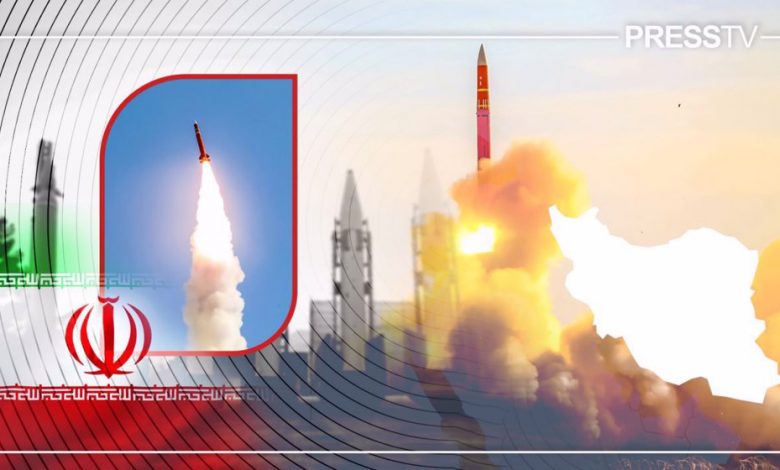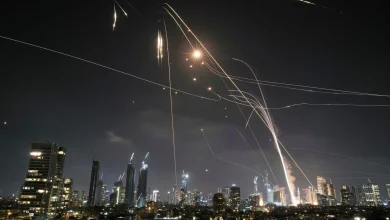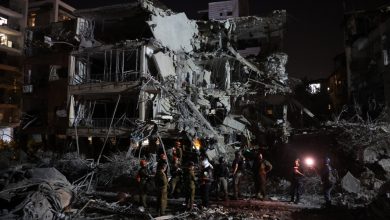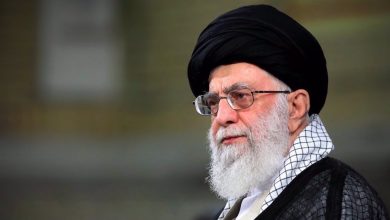Explanation: What are the sophisticated capabilities of Iran’s Bavar-373 air defense system?
The recent successful tests of advanced missiles from the Bavar-373 air defense system demonstrate the dependability of a critical component in Iran's multi-tiered air defense network.

In late August, Iranian media released high-resolution images showing the testing of the Bavar-373 air defense system in central Iran. The photos revealed an 8×8 TELAR (Transporter Erector Launcher And Radar) vehicle launching the Sayyad-4B missile, which has a range of 300 kilometers.
The tests were conducted in honor of National Air Defense Day, celebrated each year on August 30. During the event, Major General Abdolrahim Mousavi, the chief commander of the Iranian Army, lauded Iran for being among the top six countries globally with the longest-range surface-to-air missiles.
Few details were shared regarding the upgrades, technical specifications, or the location, other than mentioning it was part of the testing for the system’s most sophisticated interceptor missile.
The Sayyad-4B missile has been in the public eye since November 2022. Meanwhile, the new 8×8 TELAR vehicle was unveiled during National Army Day in April this year.
The Bavar-373, recognized as one of the top mobile long-range air defense systems globally, has been in service since 2020. Its development, spanning a decade, is a testament to the relentless dedication of Iranian specialists.
In its most sophisticated form, it safeguards a region spanning approximately 280,000 square kilometers and is employed to pursue a variety of targets, such as cruise missiles, drones, and fifth-generation stealth aircraft, across diverse ranges and heights.
“Bavar,” the Persian term for “faith,” combines with the number 373, which is the total value of the Abjad numerals corresponding to “Mohammad,” the name of Islam’s Prophet.
What was the process behind the system’s development?
The necessity for a domestic long-range air defense system emerged in 2010, during which Russia, facing significant pressure from the United States, halted the delivery of the S-300PMU-1 system to Iran.
Iran lacked a fully developed air defense system industry and was in the process of experimenting with prototypes inspired by several different systems: the short-range Chinese HQ-7, the medium-range Russian 9K37 Buk, the American MIM-23 Hawk, and the long-range Russian S-200.
During the early 2010s, the initial domestic systems such as Mersad, Raad, Ya Zahra, Herz-9, and Talash were introduced. Concurrently, more sophisticated systems, including Bavar-373, were also in development.
In late 2011, a prototype of the Bavar-373 system was showcased, with military officials claiming it would surpass the Russian S-300 in terms of intended capabilities. By the following year, they reported that 30 percent of its development had been completed.
In the same year, Iran introduced the Zoljanah 10×10 TEL (Transporter Erector Launcher) vehicle, designed to transport tubes containing interceptor missiles. Over the subsequent years, additional elements of the system were incrementally disclosed.
In 2014, Iran showcased modified versions of several military vehicles and equipment at different events, including the redesigned Zoljanah 10×10 TEL vehicle, the Zafar 8×8 radar vehicle, the Sayyad-4 interceptor missile, and an initial model of one of the Bavar-373 system’s radars.
One year following the JCPOA agreement’s signing and the subsequent removal of sanctions, Russia declared its intention to deliver the S-300PMU-2 system to Iran. Tehran consented to this arrangement but simultaneously pressed on with the development of its own Bavar-373 project.
In mid-2015, the Defense Minister at the time declared that Iran had finished developing the homegrown Bavar-373 and anticipated that mass production would commence soon after.
He further mentioned that the country will not be buying the Russian-manufactured S-400 air defense missile system, despite Moscow’s offer to sell it to Tehran.
In August 2016, Iran introduced a working prototype along with additional components, such as the Meraj-4 S-band 3D early warning radar equipped with an Active Electronically Scanned Array (AESA).
Until that point, international skeptics doubted Iran’s capability to create a long-range air defense system, a field typically dominated by Russian and American production. They either questioned Iran’s technological prowess or assumed it was merely replicating an obsolete version of the S-300PT.
However, the presentation made it clear that the launch tubes, interceptor missiles, radars, vehicles, and all other components are entirely distinct from other systems. As a result, even foreign military analysts acknowledged that it was “unquestionably a unique Iranian system.”
After an additional three years of enhancements, the Bavar-373 system was officially declared fully operational during a ceremony in August 2019, attended by high-ranking political and military officials.
Towards the close of 2022, an upgraded version of the Bavar-373 system was introduced, featuring more advanced radars and the newly developed Sayyad-4B interceptor missile that boasts an extended range.
Around the same period, Iran developed and produced two other distinct short- and medium-range air defense systems entirely on its own.
What elements make up the system?
The Bavar-373 system is designed in a modular fashion, incorporating launchers, along with a fire control section that encompasses command and control features, as well as acquisition and engagement radars.
The Bavar-373 system is extremely mobile, as all its components are mounted on trucks or trailers, enabling deployment virtually anywhere within Iran.
Unveiled in 2012 and redesigned two years later, the Zoljanah 10×10 TEL, the oldest known vehicle of its kind, features four missile tubes that are elevated using hydraulic jacks.
A substitute for the Zoljanah, absent from military displays in the last five years, is an unnamed 8×8 TELAR, which was employed in initial missile testing.
During the military parade in April this year, two Bavar-373 missile launch tubes were displayed on the MZKT-791300, an 8×8 Transporter Erector Launcher and Radar (TELAR) vehicle, which was designed and produced in Belarus.
The Bavar-373 battery has the capability to incorporate up to six TEL(AR)s positioned in proximity to one another. As a result, depending on whether the missile tubes are arranged in sets of two or four, the battery can hold a total of up to 24 missiles.
The Zafar 8×8, an Iranian-manufactured vehicle, features a 400-horsepower turbocharged diesel engine and can carry loads of up to 24 tons. It’s designed to support radars that can rotate 360° from its central mounting position and also includes a command cabin situated at the rear.
It can additionally serve for installing command and control (C2) systems, typically mounted on a 6×6 truck. Much like the previously mentioned TEL(AR)s, the Zafar 8×8 is designed for off-road functionality and boasts an operational range of 800 km.
The Bavar-373 system includes just one trailer-mounted component: the massive Meraj-4 radar, which is the largest in the setup. This radar is towed by a tractor truck designed for civilian use.
The Meraj-4 is a 3D S-band linear AESA radar with long-range capabilities, featuring 40 rows of waveguides. It was developed and manufactured by Shiraz Electronics Industries (SEI).
Its role is to oversee vast areas of airspace spanning over 636,000 square kilometers, and to relay information to neighboring systems.
The Meraj-4’s slotted waveguide planar array features a 250 MHz bandwidth and rotates between 3 to 6 times a minute. It is capable of detecting targets traveling at speeds up to Mach 3, at altitudes ranging from 100 meters to 25 kilometers, and at distances extending up to 450 kilometers.
The antenna functions effectively in temperatures ranging from -30 to +55°C, at altitudes reaching 3000 meters, with air humidity levels up to 95%, and under wind speeds up to 20 m/s. Four radar crew members can install it within 30 minutes.
Its electronic counter-countermeasures (ECCM) features encompass burn-through, sidelobe blanking (SLB), sidelobe cancellation (SLC), frequency hopping, pulse repetition frequency (PRF) jitter, jamming analysis transmission selection (JATS), and a lowest side lobe level (LSLL) antenna.
Alongside the Meraj-4 radar, the Bavar-373 system incorporates the Hafez S-band AESA acquisition radar, installed on a Zafar 8×8 vehicle. This radar features track while scan (TWS) capabilities, can cover a maximum range of 300 kilometers, and is capable of detecting up to 100 targets simultaneously.
The third system is the X-band AESA engagement radar, developed by SEI, which boasts a maximum detection range of 320 km. It can simultaneously track up to 300 targets and engage six targets at once, deploying a total of twelve missiles, with each target being hit by two missiles.
The last two include an Alim passive radar, which is designed to counter electronic warfare and enhance the detection range of stealth targets, along with an unidentified device observed on the most recent TELAR.
The Bavar-373 employs Sayyad-4 interceptor missiles, which have a 300 km range and are launched vertically from various Transporter Erector Launchers (TELs).
Please provide the text you would like rewritten and paraphrased.







